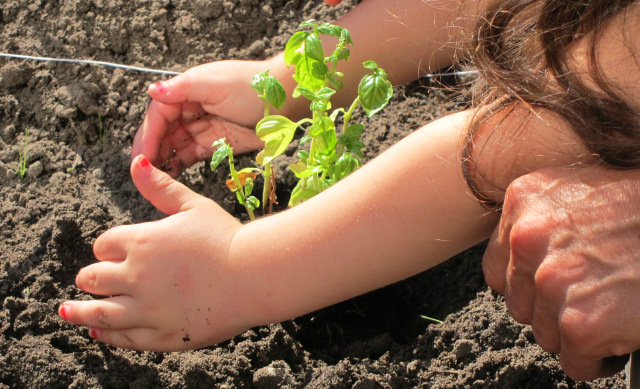Blog
Playing and learning at all ages!

In February 2016 I gave a keynote address about the opportunities provided by intergenerational learning for young children and older people at the British Early Childhood Research Association Annual Conference.
These are some of the ideas I discussed. “Human beings have a natural inclination to act together, to create together, to play together and to learn together”. So said psychologist Jerome Bruner in his 1996 collection of essays The Culture of Education. In this book, Bruner takes the discussion about education beyond school walls, beyond discussions on curriculum and standards, emphasizing instead learning conversations between children of different ages, between parents and children, between family members of all ages where all participants are encouraged to think about their own thought processes – to think about thinking.
That was 1996, 20 years later, why is it so important to remind ourselves of our relational selves in the context of learning? Affrica Taylor, in an excellent and thought provoking book titled: Reconfiguring the Natures of Childhood, proposes that young children need relational and collective dispositions to equip them to live well in today’s complex, interconnected and boundary-blurred world. She writes it is important for young children to feel a shared belonging and shared responsibility with their immediate worlds.
She conceptualizes the notion of relations in common worlds – referring to relatedness not only to people, but to plants, animals, waterways, climate and the land. The TOY approach considers relational dispositions and shared belonging from the perspective of the relations, connections and learning between the youngest and oldest generations – young children up to 8 years and older people, men and women from around 60 years old and upwards.
Today, people are living longer, healthier and more active lives than ever before. We also notice changes in views about who can participate in education and learning, such that the learning is a lifelong activity and central to wellbeing and to our brain health. There are also changes as to where learning takes place: online, at home, in children’s centres and in cultural and arts centres, as well as in schools.
Neuropsychologist Sabina Brennan, speaking about brain health, especially in the older years and what can be done to delay onset of symptoms of dementia has noted that we have been very cohort or age-focussed in the way we organise our Western Society. We tend to do things with people the same age as us – go to school, socialise etc. Thus, as we get older, as we die off, our social circles get smaller. And according to Sabina Brennan, social isolation and loneliness are as bad for your health as smoking and obesity.
So, from a brain health perspective, encouraging more intergenerational contact is a fundamental societal imperative and the two groups who could benefit most were those at either ends of generational spectrum, which brings us back to the TOY approach.
The development of the TOY approach grew out of shared concern amongst the original TOY Project (2012-2014) Consortium members that the potential of intergenerational learning specifically involving older people and young children (0-8 years) was underdeveloped. Supported by evidence, examples of good practice and personal stories of change, our mission has been to promote and give value to this form of intergenerational (IG) learning, particularly outside the family setting such as in community centres, libraries, arts centres, neighborhood centres, parks, and care homes for older people as well as, primary schools and ECEC centres.
When we asked older people participating in TOY pilots about their perceptions of IG contact with young children and how they benefitted they highlighted:
- being and feeling mentally and physically active and useful;
- being and feeling valued;
- being and feeling able to contribute;
- having fun and bringing fun;
- developing self-confidence and esteem;
- taking care of and being part of the future of their communities.
When they had the opportunity to be in contact with older people on a regular basis, children seemed to enjoy the slow pace of this relationship compared to the high-speed daily life they often have with their parents. Regularity was important in building and sustaining relationship between young and old. One-off meetings did not have the desired impact. Children interviewed said they liked learning from older people about what their life as a child was like and liked playing games from the past with them.
Many of those interviewed mentioned that the joint activities between older people and young children challenged stereotypes about ‘oldness’ (what it is to be old) and ‘youth/children of today’, and both generations learnt about the values of sharing, solidarity, respect and acceptance of the ‘other’.
Seniors also mentioned that the stereotypical views they had about children were challenged. Older people valued getting insight into children’s life-worlds and felt more ‘up-to date’.
Ageing is often related to wisdom – an evolutionary process that makes us increase our knowledge and experience with time – so we eventually become mature and complete. In contrast, childhood is identified as the age of spontaneity and immaturity. Anthropologist Margaret Mead muses on such assumptions about different ages:
“It is utterly false and cruelly arbitrary to put all the play and learning into childhood, all the work into middle age, and all the regrets into old age.”
The intergenerational activities promoted in the TOY approach included making music together, singing, drama, dance, playing games, storytelling, crafting, sowing, harvesting and cooking. These joint activities provide young children and older people the opportunity to express and experience different selves, to be active learners at any age and to be playful and spontaneous.